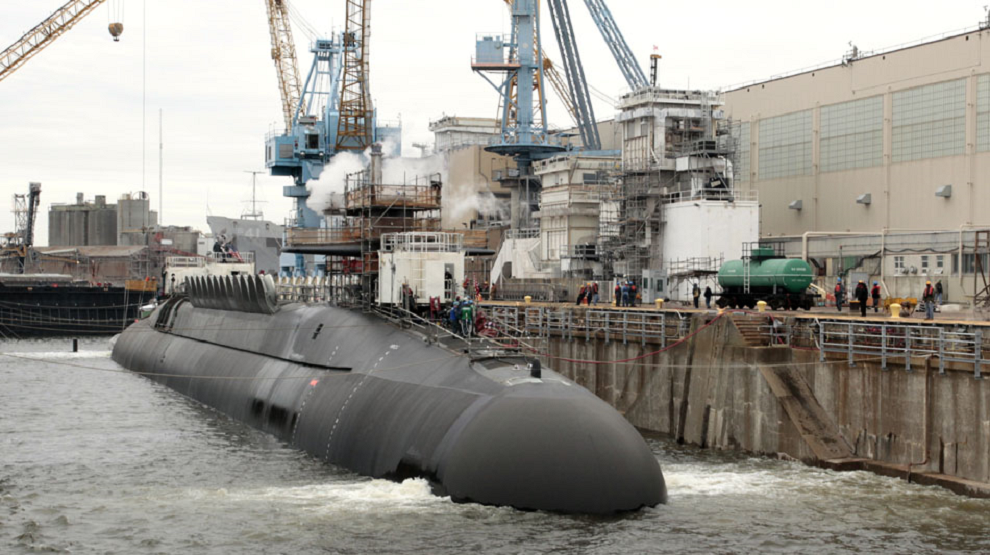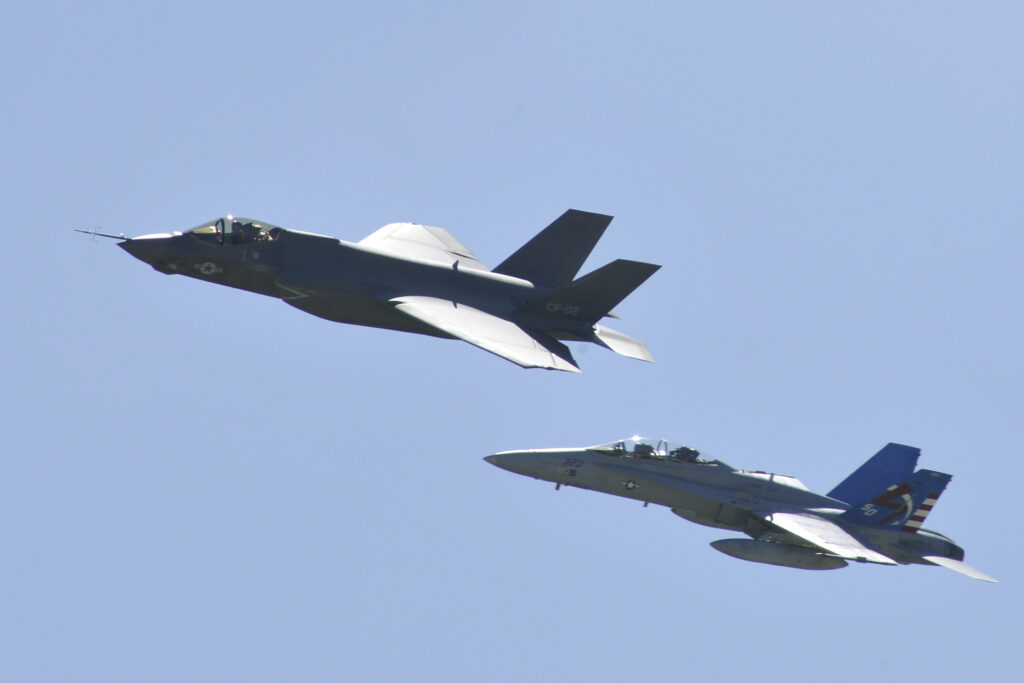Three Attack Subs ‘Not Certified To Dive’; Navy F-35s at 15 Percent Readiness
Posted on
CAPITOL HILL: Navy readiness is “heading in the wrong direction,” the Government Accountability Office told the Senate this morning, with only 15 percent of Navy F-35Cs rated “fully mission capable.” At the same hearing, a four-star admiral acknowledged three nuclear-powered attack submarines were still stuck awaiting overhaul, with the USS Boise expected to be out of action for a total of six years.
The hearing comes just days after two Marine Corps aircraft crashed off the coast of Japan, killing seven. 2017 had been “a horrible year” for Marine aviation with 20 deaths, commandant Gen. Robert Neller, said back in January. 2018 had been much better — with no Marine aviation deaths and just one “Class A Mishap” doing more than $2 million in damage — until last Thursday’s crash. Aviation is an inherently risky profession and aviation mishaps are often considered a canary in the coal mine for wider readiness problems caused by funding shortfalls, maintenance bottlenecks, or excessive stress on the force.
Nuclear Submarines
While maintenance backlogs continue to be felt across the services, the Navy in particular has lost more than 27,000 days of ship and submarine availability due to maintenance delays since 2012. The problem is particularly acute for nuclear powered vessels — submarines and aircraft carriers — on which only a few shipyards are qualified to work.
“Completing maintenance on time has proven to be a wicked problem,” GAO’s John Pendleton said. A GAO report released to coincide with the joint hearing before the Senate subcommittees on sea power and readiness and management support found that over the past decade, the Navy has spent $1.5 billion “to support attack submarines that provide no operational capability—those sitting idle no longer certified to conduct normal operations—while waiting to enter the shipyards.”
Three submarines are currently out of service as they wait their turns in dry dock for repairs and overhaul. One, the now-infamous Los Angeles-class attack sub USS Boise, has been out of commission for more then three years awaiting its turn.
Adm. William Moran, Vice Chief Of Naval Operations, told the Senators that the Boise will begin repairs next month, while the other two boats will get their shot in February and May. The Boise has not deployed since 2015, and its overhaul is expected to be completed in 2021, which means a six-year gap between deployments.
Moran said that it has taken the attack subs so long to get into a dry dock because they fall lower on the food chain when it comes to repair priorities. First come the Navy’s ballistic missile subs, which carry much of the nation’s nuclear deterrent; “next is our carriers, which have been ridden very hard” in recent years with extended deployments; and “last and standing in line to get into those availabilities in our public yards are the (attack submarines), so we have begun to put them in private yards to level the load.”
Using private shipyards has lessened the strain somewhat, Moran said. “The numbers are coming down significantly. The standing in line has come down significantly, [but] we still have a ways to go. We’re not out of the woods yet, but I think as capacity opens up in the private yards, and we do a better job in the public yards, getting our carriers out on time, we’ll be there.”
The Navy is looking to upgrade its public shipyards and is putting together a plan to use more private yards. That plan should make it to the Hill at the end of the month, Navy Secretary Richard Spencer said.
Navy Fighters
Earlier this year, Defense Secretary James Mattis ordered the military to raise fighter aircraft availability to 80 percent by the end of 2019. That’s a tall order that has the services scrambling.
Adm. Moran had some positive news to share there. Last year, less than 40 percent of Navy and Marine Corps Hornets were in service. Now, Moran says, the Navy’s operational squadrons of F/A-18E and F/A-18F Super Hornets are currently seeing readiness rates of about 66 percent, up from about 45 percent just last year. But he noted that is only for combat-ready squadrons: If you look at the entire fleet of Super Hornets, including training squadrons and aircraft sent to depots for major overhauls, the number will be lower.
The 66 percent figure also doesn’t include the older-model non-super Hornets, the F-18A, B, C, and D models. Those are particularly common in the Marine Corps, which, unlike the Navy, never bought the “Super” E and F variants.
The 80 percent number “is a stretch goal, but it is a stretch goal we will take,” Spencer said. He said he has seen improvements, especially in the Hornet fleet, after the navy hired a former exec from Southwest Airlines who has increased the flow of aircraft passing through the depots.
The GAO’s Pendleton was less sanguine. Is Mattis’ request possible? “That is the 80 percent question,” Pendleton said. “We have to understand what ‘mission capable’ means. That does not mean the aircraft can do all the missions that are assigned to it”: That would mean a designation of “Fully Mission Capable” (FMC).
Last year, the F-35 typically had a 15 percent fully mission capable rate, Pendleton said. “Early indications incorporating them into the fleet is that we are seeing some challenges there as well,” he testified. “It took months, sometimes six months or more to get parts repaired and back out to the fleet.”
The F-35 program office said in a statement that the aircraft’s reliability across all three variants “continues to improve and newer production aircraft are averaging greater than 60 percent mission capable rates with many operational squadrons consistently at or above 70 percent. In partnership with our customers, we’re taking aggressive actions to achieve the shared goal of 80 percent mission capable rates.”
However, Sec. Spencer warned, things would get much worse if Congress fails to override the Budget Control Act next year and budget caps go into force in 2020. Any progress the Navy has made in getting readiness back would be wiped out, he said, and “to kill it now with any sort of sequestration would be a crime.”
Subscribe to our newsletter
Promotions, new products and sales. Directly to your inbox.



